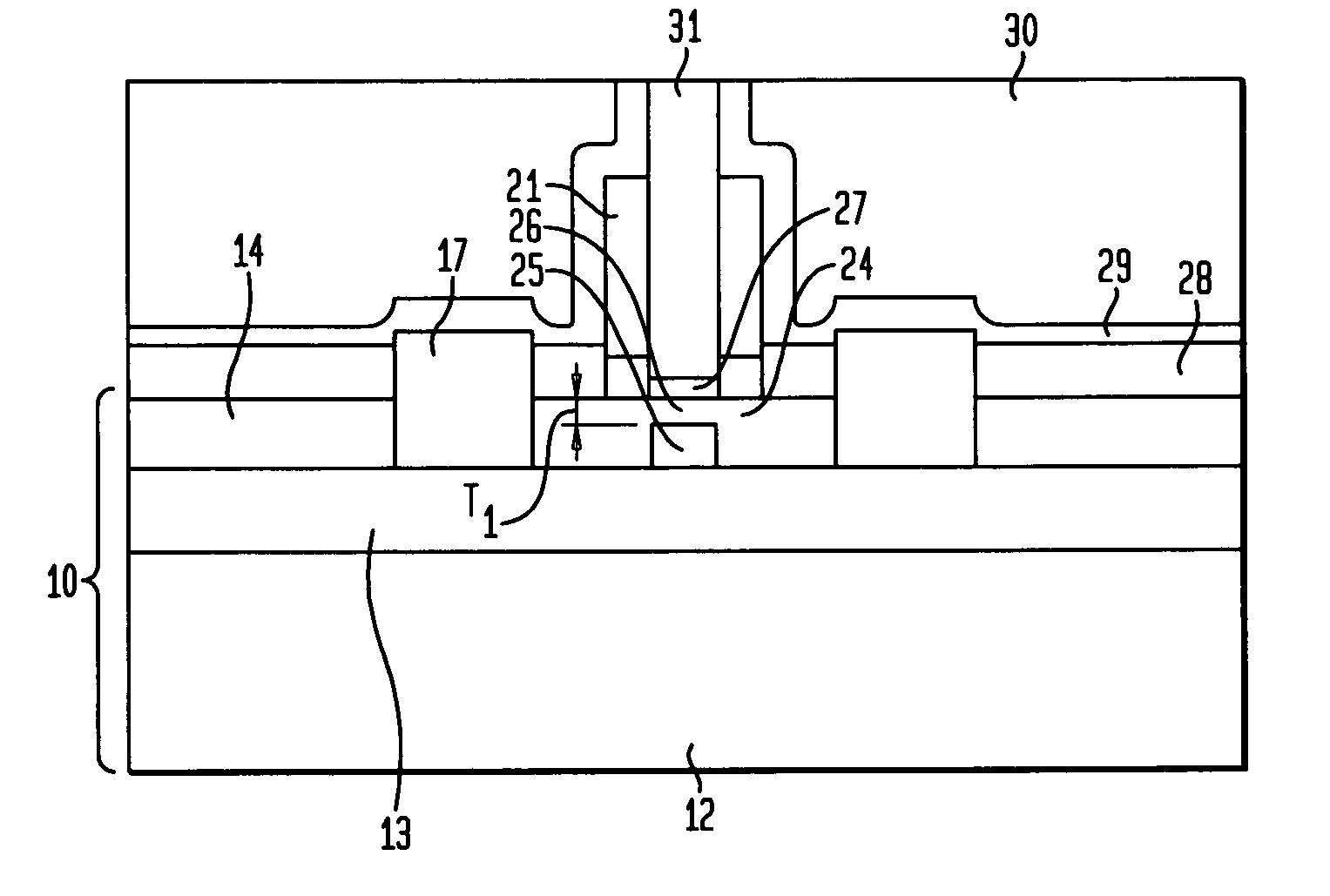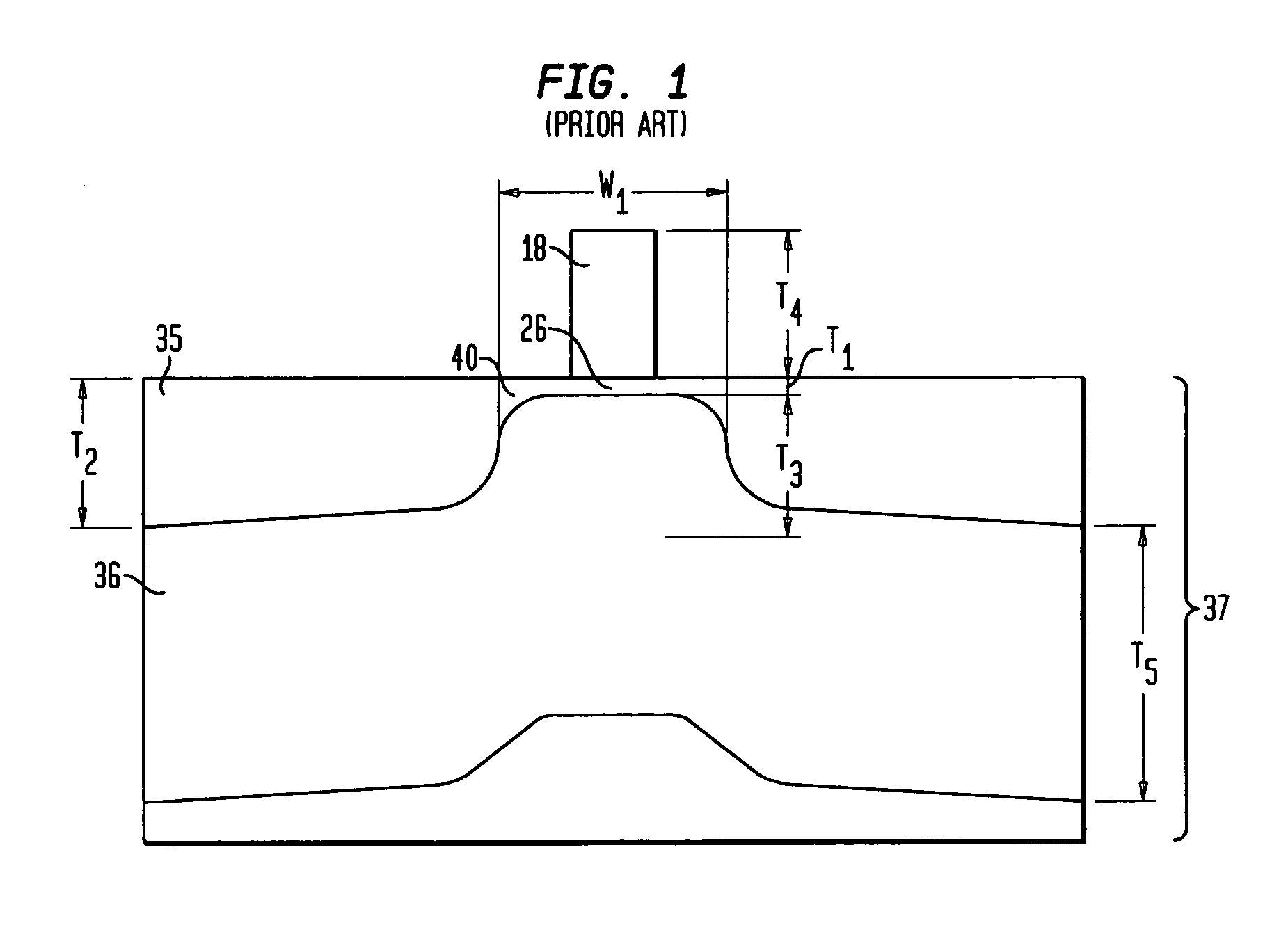Ultra-thin Si channel MOSFET using a self-aligned oxygen implant and damascene technique
a technology of oxygen implants and damascene, which is applied in the direction of semiconductor devices, electrical equipment, transistors, etc., can solve the problems of series resistance increase, degrade manufacturing yield, circuit performance degradation, etc., and achieves lateral spread, slow circuit performance, and parasitic capacitance increase
- Summary
- Abstract
- Description
- Claims
- Application Information
AI Technical Summary
Benefits of technology
Problems solved by technology
Method used
Image
Examples
Embodiment Construction
[0039] The present invention provides a thin channel SOI MOSFET having low resistance source / drain regions 24 formed in the SOI layer 14 of a silicon-on-insulator (SOI) substrate 9. The thickness T1 of the thin channel region 26 of the present invention is on the order of less than about 50.0 nm, preferably ranging from approximately 3.0 nm to approximately 30.0 nm.
[0040] The inventive thin channel MOSFET further comprises a localized oxide region 25 self-aligned to an overlying gate region, where the localized oxide region 25 in conjunction with the buried insulating layer 13 of the SOI substrate 9 effectively thin the device channel 26 while allowing for the formation of source / drain extensions 24 having a thickness equal to the thickness of the SOI layer 14 of the substrate. The present invention also provides a method for forming thin channel SOI devices where a dummy gate region 23 in conjunction with an oxygen implant 40 form the localized oxide region 25 that effectively thi...
PUM
 Login to View More
Login to View More Abstract
Description
Claims
Application Information
 Login to View More
Login to View More - R&D
- Intellectual Property
- Life Sciences
- Materials
- Tech Scout
- Unparalleled Data Quality
- Higher Quality Content
- 60% Fewer Hallucinations
Browse by: Latest US Patents, China's latest patents, Technical Efficacy Thesaurus, Application Domain, Technology Topic, Popular Technical Reports.
© 2025 PatSnap. All rights reserved.Legal|Privacy policy|Modern Slavery Act Transparency Statement|Sitemap|About US| Contact US: help@patsnap.com



